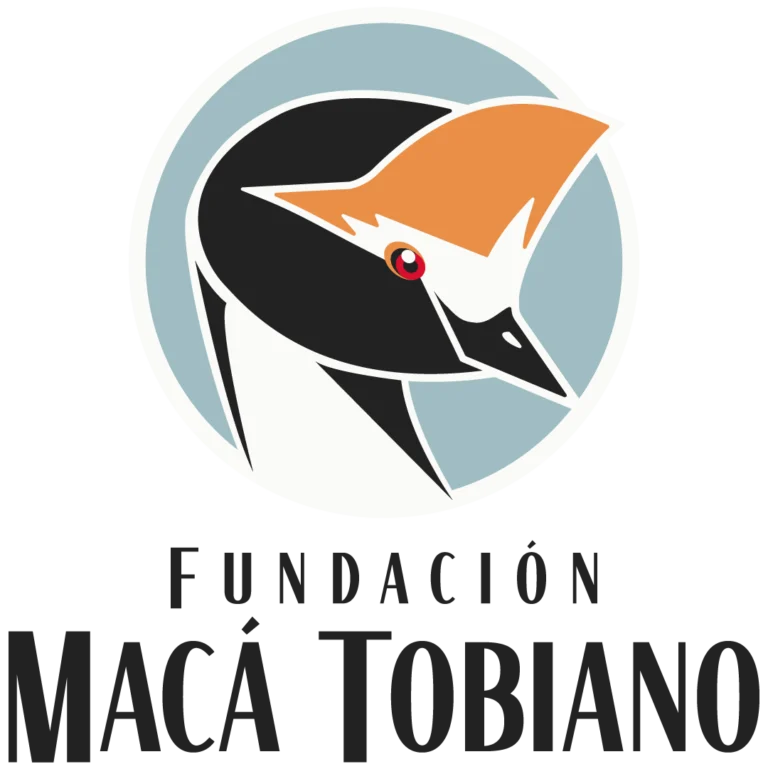About Us
Who are we?
The Hooded Grebe Foundation(Hooded Grebe Foundation) was created to respond to a growing need: to enhance and expand conservation efforts based on science, through the restoration and management of ecosystems throughout Patagonia and other regions of Argentina. Our purpose is to contribute to a protected and restored Patagonia —from the Andes to the sea—. The Macá Tobiano, an emblematic and critically endangered bird, is our flagship species that inspires awareness and action throughout the region. Our main objective is for conservation needs to direct our efforts, seeking efficient, evaluated, and sustainable solutions over time.

Mission
At the Hooded Grebe Foundation, we seek to develop and implement management and conservation strategies to restore ecosystems and stop the extinction of endangered species, as well as take action to preserve the health of the environment. We consider human beings and their activities as part of the environment. Our work on a local scale has an impact at a national and international level.
Vision
Through restoration and management applied with a strong component of scientific research, we promote the generation of knowledge to understand the biological processes of the environment, we develop and apply strategies to conserve them. We contribute to the management and creation of protected areas, environmental awareness, and sustainability. In addition, we generate inter-institutional work networks and train people to promote our impact on a regional and global scale. We are guided by the commitment to manage the funds allocated to conservation with responsibility, efficiency, and the greatest possible impact.
© Darío Podestá
What do we do?
Objectives
© Gonzalo Pardo
Where do we work?
- Laguna Brava Provincial Reserve
- San Guillermo National Park
- Aconcagua Provincial Park
- Domuyo Protected Natural Area
- Filo Hua Hum (Lanín National Park / Nahuel Huapi National Park)
- Limay River
- Nahuel Huapi National Park
- Somuncurá Protected Natural Area
- Lago Puelo National Park
- Los Alerces National Park
- Pico-Corcovado River and Senguer River
- La Cautiva Ranch
- Sarmiento
- Meseta de las Lagunas Sin Fondo (Plateau of Bottomless Lagoons)
- Gobernador Moyano Plateau
- Lake Buenos Aires Plateau / Patagonia National Park
- Pinturas River Canyon / Cueva de las Manos Provincial Reserve
- “Juan Mazar Barnett” Biological Station
- Meseta del Asador (Asador Plateau)
- Lago Strobel Plateau
- Perito Moreno National Park
- La Angostura Ranch
- Alta Vista Ranch
- El Islote Refuge (Cerro Bayo Ranch)
- La Siberia Plateau
- Mata Amarilla Plateau
- Santa Cruz River Estuary
- Coyle Estuary
- Río Gallegos Estuary
- Cabo Vírgenes (Cape Virgins)
- De Las Vueltas River Valley / Los Glaciares National Park / Lago del Desierto Provincial Reserve
- North of Tierra del Fuego
A bit of history
In 2009, due to the crisis facing the Hooded Grebe, a critically endangered species endemic to Southern Patagonia, we created the Hooded Grebe Project. After years of extensive work and research, we understood that to prevent the extinction of this species, we had to work on a regional scale. This way, we can address the different threats, among which invasive species, changes and habitat loss stand out, in addition to the possibility of including social aspects in these problems. In response to this need, in 2013 we created the Patagonia Program to generate conservation and research actions in this region. Since then, the Program has grown steadily and today we work on different projects and species throughout Neuquén to Tierra del Fuego. In 2024, we began working outside of Patagonia, in the High Andes of Cuyo and the Argentine Northwest. This was the final sign that we had to take the necessary step of creating the Hooded Grebe Foundation, with the motto “science and conservation,” to restore environments and populations of threatened species, as well as extend our capabilities beyond the institutional environment in which we were framed.
© Darío Podestá
- Legal address: Calle 64 N620 5to A, La Plata (1900), Buenos Aires, Argentina.
- Operational headquarters (for correspondence): Calle Meli Nº11692, Bariloche (8400), Río Negro, Argentina. Tel: +5492901531570 · Email: fundacion@macatobiano.org